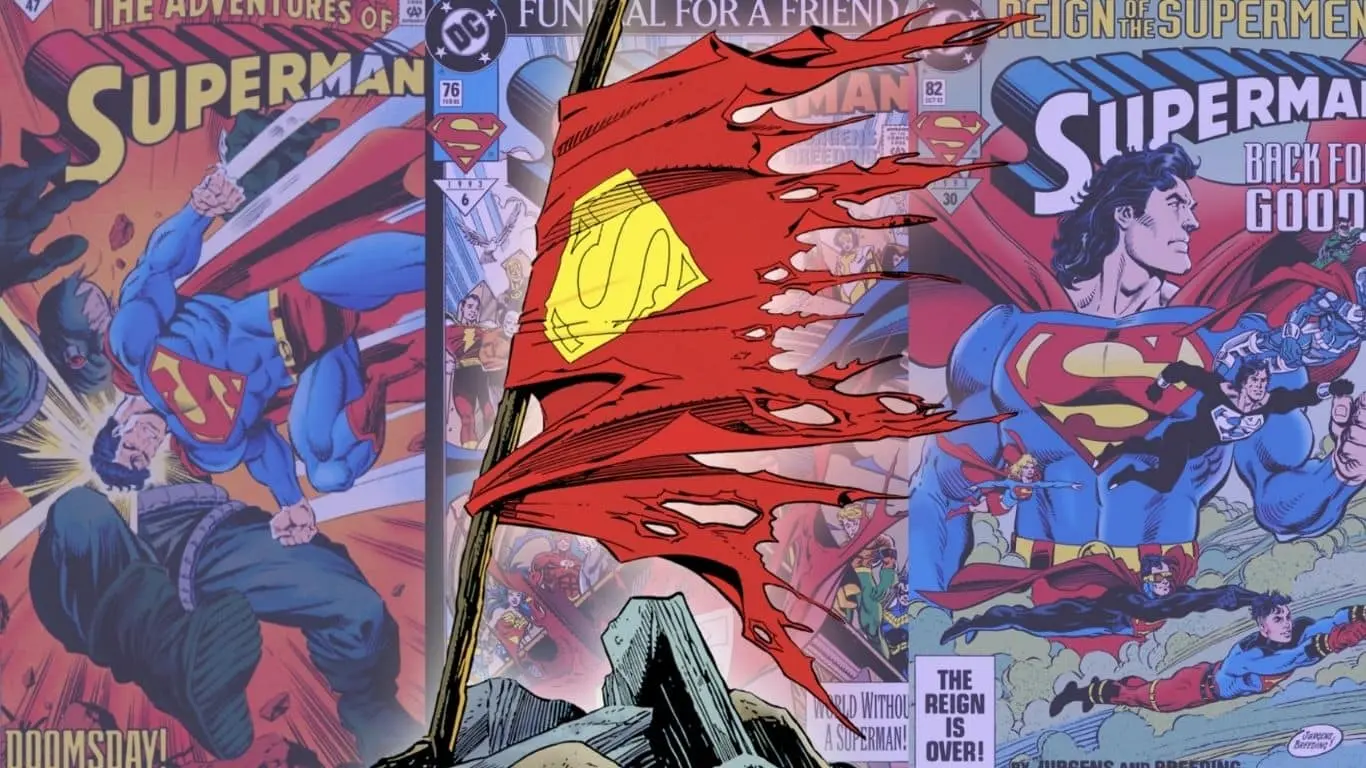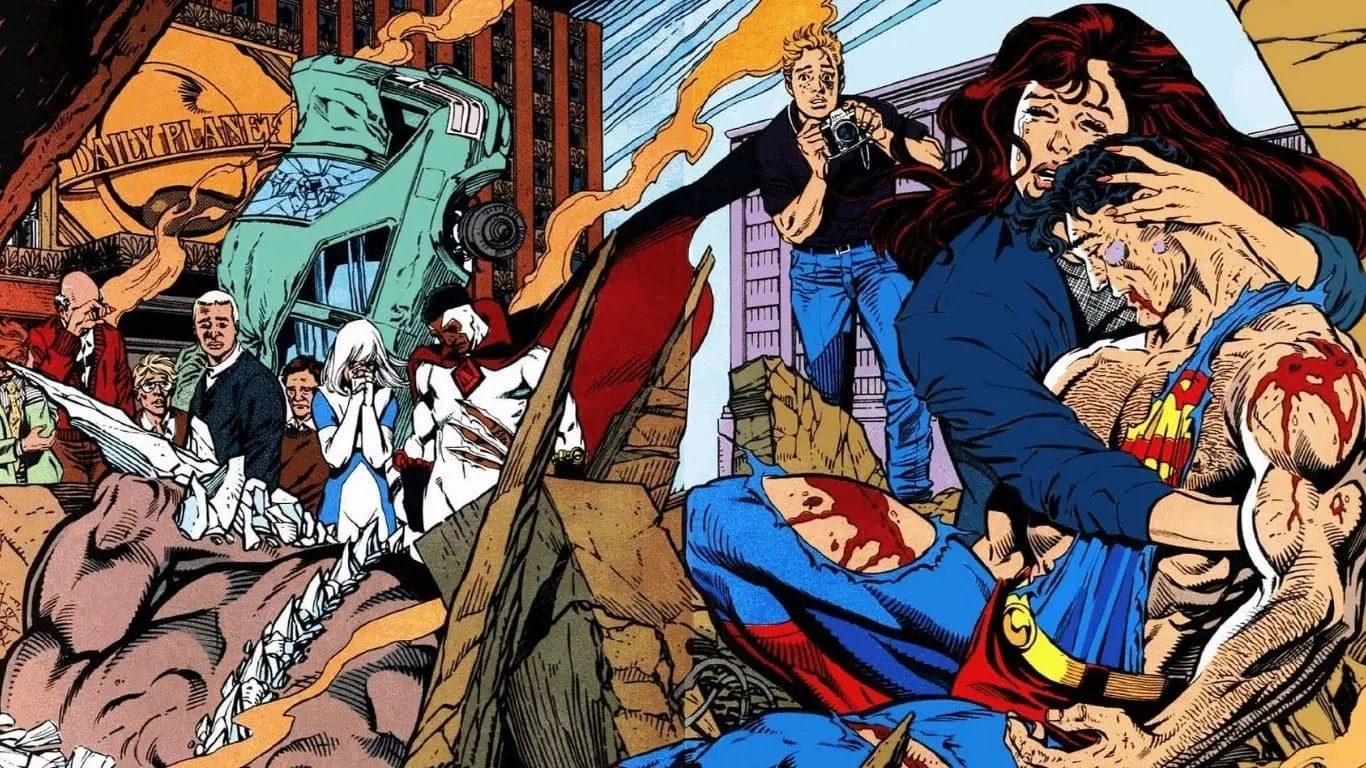In the dynamic and ever-evolving world of comic books, death is rarely the end for superheroes. These iconic characters face perilous situations on a daily basis, confronting powerful villains, cosmic threats, and world-ending crises. It’s no surprise that death occasionally comes knocking at their door. However, in the comic book realm, death is often more of a temporary inconvenience than a permanent farewell. The cycle of life and death in superhero comics has led to some of the most memorable story arcs and character developments in the history of the medium.
The Cycle of Life and Death

The concept of life and death in comic books is unique. While characters may meet their demise, it is seldom permanent. Readers and fans understand that superheroes possess extraordinary abilities and often inhabit a universe where the impossible is possible. Death is a narrative tool, a dramatic device that serves to heighten tension, explore character development, and challenge the very essence of heroism.
Superheroes, by their very nature, embody ideals of courage, sacrifice, and resilience. They face overwhelming odds with unwavering determination, and their willingness to put their lives on the line to protect the innocent is a core element of their character. This inherent heroism often leads them to confront situations where the risk of death is ever-present.
Resurrections: Back from the Beyond

One of the most common and celebrated tropes in comic books is the resurrection of superheroes. These resurrections come in various forms, each with its own unique twist. Characters like Superman, who met his demise in the iconic “The Death of Superman” storyline, have returned to the land of the living through a myriad of means.
For Superman, it was a combination of Kryptonian technology and the potent energies of Earth’s sun that brought him back from the brink. His resurrection was a momentous event in comic book history and a testament to the enduring appeal of the character. When Superman returned, it was not as a mere imitation but as the genuine Man of Steel, ready to continue his heroic journey.
Reboots: A Fresh Start

In addition to resurrections, comic book publishers occasionally opt for a different approach—rebooting entire universes or storylines. This creative decision allows for a fresh start, a blank canvas on which new tales can be told. The “New 52” initiative by DC Comics and Marvel’s “All-New, All-Different” era are prime examples of how reboots can reshape superhero narratives.
These reboots often bring characters back to life in altered forms or with modified origins. While some fans may lament the erasure of certain storylines, reboots inject new energy and excitement into familiar characters. They provide opportunities for writers and artists to explore uncharted territory and redefine the essence of beloved heroes.
Multiverse: A Web of Possibilities

The concept of the multiverse is a fascinating and complex way to handle superhero deaths and resurrections. In a multiverse, there are multiple parallel universes, each with its own set of heroes and villains. When a character dies in one universe, they may still exist in another. This concept opens up a web of possibilities for bringing characters back to life or exploring alternate versions of them.
For example, the DC Comics multiverse includes Earths where different versions of Superman exist, each with its own unique story. When one Superman dies, another can step in from a different Earth. This concept allows writers to explore different facets of a character’s personality and history, keeping the character fresh and engaging. It also introduces the intriguing notion that every iteration of a character exists somewhere in the vast multiverse, ensuring their immortality in the world of comics.
Iconic Examples

No discussion of superhero deaths and resurrections is complete without mentioning iconic examples. These stories have left indelible marks on comic book history and continue to captivate readers and fans alike. Here are a few standout examples:
The saga of Jean Grey and the Phoenix Force is a legendary tale of death and rebirth. Jean Grey, a member of the X-Men, becomes the host for the immensely powerful Phoenix Force. In a moment of cosmic corruption, she transforms into the Dark Phoenix, leading to tragic consequences. Her apparent death is a pivotal moment in the X-Men’s history. However, Jean Grey’s story doesn’t end there. She is resurrected in various forms, demonstrating the enduring nature of her character.
Barry Allen, the Scarlet Speedster known as The Flash, sacrificed himself to save the universe in the epic crossover event “Crisis on Infinite Earths.” His heroic act led to his apparent demise. Yet, the concept of the multiverse allowed for the return of Barry Allen. He came back in a momentous and emotional storyline, reaffirming his role as a beacon of hope in the DC Universe.
Bucky Barnes, once thought to be dead, returned in a surprising twist in the pages of “Captain America.” His resurrection as the Winter Soldier added layers of complexity to his character and redefined his relationship with Captain America. This example showcases how resurrections can lead to compelling character development and storytelling opportunities.
Emotional Impact

While superhero deaths and resurrections can sometimes be seen as plot devices, they also carry significant emotional weight. The mourning of characters like Spider-Man after the death of Gwen Stacy or Batman’s grief over Jason Todd (Robin) in “A Death in the Family” humanizes these larger-than-life figures. These moments of loss and anguish add depth to their stories and remind readers that, beneath the masks and capes, superheroes are individuals who experience triumphs and tragedies.
The End or Just the Beginning?

In the world of comic books, death is not the end; it’s often just the beginning of a new chapter. Superheroes may face mortality, but they also embody resilience and the enduring spirit of heroism. Their ability to bounce back from the brink of death keeps readers engaged and invested in their ongoing adventures.
The dynamic nature of the comic book medium allows for constant reinvention and exploration. Characters evolve, narratives shift, and the boundaries of storytelling are pushed to new limits. While death may be a part of the journey, it is never the final destination for these iconic heroes.
The Evolution Continues

As comic books continue to evolve, so too will the handling of superhero deaths. New generations of writers and artists will find innovative ways to explore the themes of life, death, and rebirth. Whether through resurrections, reboots, or the multiverse concept, superheroes will remain a testament to the limitless possibilities of storytelling in the comic book medium.
In the world of comic books, death is just another plot point, and superheroes always find a way to return to the fray. The cycle of life, death, and rebirth, often guided by the concept of the multiverse, is a testament to the enduring appeal of these iconic characters and the boundless creativity of the comic book industry. Dive deeper into the world of comic book resurrections and discover the stories that defy death itself.
Also Read: Most Romantic Quotes from Comics



